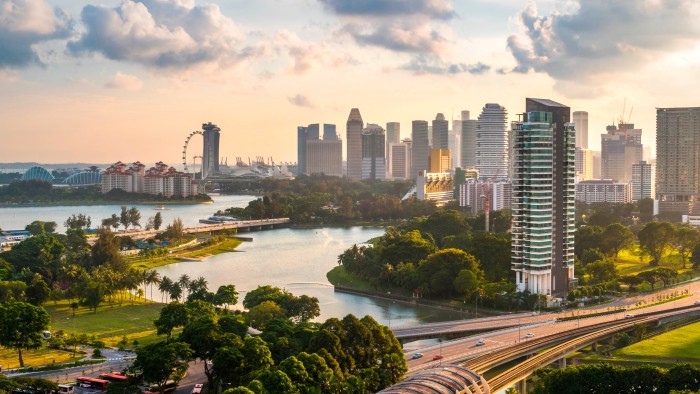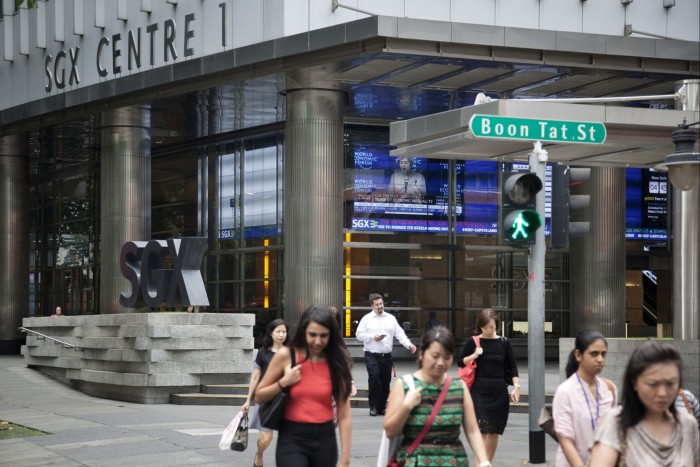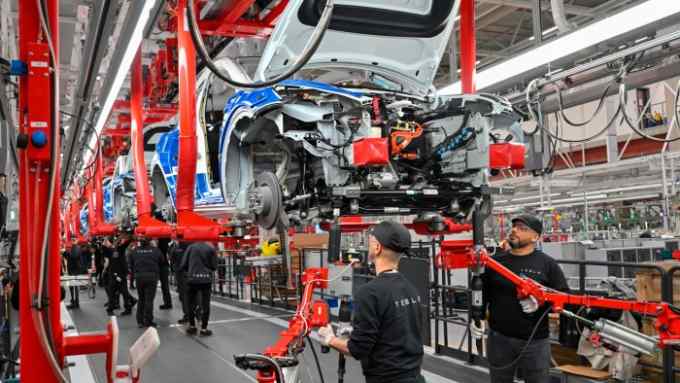Singapore pushes to become carbon market hub

Roula Khalaf, Editor of the FT, selects her favourite stories in this weekly newsletter.
To businesses struggling to hit their emissions targets, they are a lifeline; to climate campaigners, they are a vehicle for greenwashing. But to Singapore, carbon markets are above all an opportunity: the Asian city-state is betting big on an area of finance that it thinks can only grow as the world transitions to a low-carbon economy.
In its race with Tokyo and Hong Kong to be the region’s premier business hub, Singapore wants to become the preferred financial centre for governments and businesses that inevitably need to interact with the global carbon market to cut their emissions.
Its ambitions encompass both the largely unregulated international voluntary carbon market as well as the compliance carbon market — which is seen by governments as crucial to achieving carbon reduction targets.
In 2019, Singapore became the first country in south-east Asia to put a price on carbon — which companies will next year be able to offset by buying carbon credits. Last year, it went on to become the first in the region to launch a carbon exchange. It has also signed a string of deals with developing countries on carbon credit collaboration.
Much of Singapore’s ambition is born of necessity. With its 5.5mn population and tiny size, it has no natural resources of its own. But its central position in Asia allows it to serve as a bridge between established carbon markets in the west and emerging markets in the region. It can facilitate the flow of carbon credits and investments and, thereby, potentially accelerate its own emissions reduction plans.

“For a number of years now, Singapore has had ambitions in relation to hosting financial markets but, in particular, carbon markets,” says Pedro Barata, associate vice-president of carbon markets for the Environmental Defense Fund, a US non-profit organisation. “It wants to play a central role in terms of carbon trading in the region. Nobody else in Asia, to my knowledge, is trying to create similar infrastructure like Singapore.”
A large part of that ambition is focused on voluntary carbon trading — a system that allows the buying and selling of carbon credits internationally to incentivise and regulate emissions reductions.
If Singapore can harness the opportunity, it stands to benefit enormously from a market that could be worth $50bn by 2030, according to the consultancy McKinsey.
But it is a system that has been beset by controversies in recent months. Critics say it allows companies to continue polluting without materially contributing to reducing their emissions.
Carbon offsets were even described as an “oxymoron” by the independent Carbon Market Watch group, given the example of tree planting in China to offset the emissions generated by Shell in producing gas that was marketed as “carbon neutral” — as first reported in the FT.
In the past 18 months, such schemes have proliferated, many unverified. The pledges for carbon removal through tree planting, for example, would require a land area the size of the US, scientific studies have concluded. Furthermore, forests in the US that generated offsets bought by companies including BP and Microsoft were burnt in summer fires, calling into question their value.
“It is an interesting time to be going all in on carbon trading, but their reputation is good and you would probably trust an exchange in Singapore over say, Malaysia, Thailand or even Hong Kong,” says one Singapore-based carbon trader, who asked to remain anonymous.
Singapore’s government has acknowledged the challenge of ensuring that carbon credits uphold high environmental integrity standards. In February, it said that this year it would publish a “white list” of credits that would be acceptable for offsetting Singapore companies’ taxable carbon emissions. This list will include approved host countries, programmes and methodologies.
“We know this market is missing trust . . . Singapore has the right pedigree,” says Mikkel Larsen, chief executive of Climate Impact X, a global exchange and marketplace for carbon credits based in Singapore. “It has the basic infrastructure and experience with creating new markets.”
Jointly established by DBS Bank, Singapore Exchange, Standard Chartered and state investor Temasek, CIX launched its first nature-based standardised contract this month. The credits covered by the contract are generated through schemes that protect forests that would otherwise be destroyed or degraded, it says. Eligible projects include rainforests and biodiversity reserves in Asia, Africa and South America.
“Singapore’s emissions are large for a country of its size and it has no real means of getting to net zero,” says Vidur Nayar, head of Asia-Pacific environmental trading at Hartree Partners, a global energy and commodities trading group. “But the commodity traders are all here and so, naturally, you are seeing growth in carbon trading, too.”
Giving added heft to Singapore’s push is some good old-fashioned incentivising. The city-state will allow companies to use high-quality international carbon credits to offset up to 5 per cent of their taxable greenhouse gas emissions from 2024. While relatively low now, at S$5 per tonne, the tax will rise to S$25 per tonne in 2024, and S$45 from 2026.
Voluntary markets are only part of Singapore’s strategy, however. The country also has its sights set on compliance markets, which are established by governments as a means of cutting national emissions through mandatory cap and trade schemes. These are mechanisms where carbon emitters buy or sell credits based on whether they exceed or undershoot emissions limits set by the government.
Asia is one of the biggest growth areas for compliance markets: both South Korea and, more recently, China have established emissions trading schemes, and Indonesia and India will soon follow.
Under Article 6 of the 2015 Paris climate accord — the UN agreement to limit global warming to 2C, and preferably 1.5C, above pre-industrial levels — countries can also co-operate to share the benefits of emissions reduction schemes, in order to hit their national decarbonisation targets.
In May, Singapore signed a memorandum of understanding with Bhutan to co-operate on carbon credits under the terms of Article 6.
This deal was the 10th such MoU: other nations that have signed up with Singapore include Colombia, Kenya, Peru and Vietnam.
Experts say that companies operating in multiple countries will prefer a central, trusted venue for trading the credits that compliance schemes create — and Singapore wants to be that venue.
“It is Singapore saying . . . we will be your outlet, we will be your go-to financial centre for trading these, we will assist you with those trades, including getting the recognition of international standards,” says Barata from the Environmental Defense Fund.

Comments